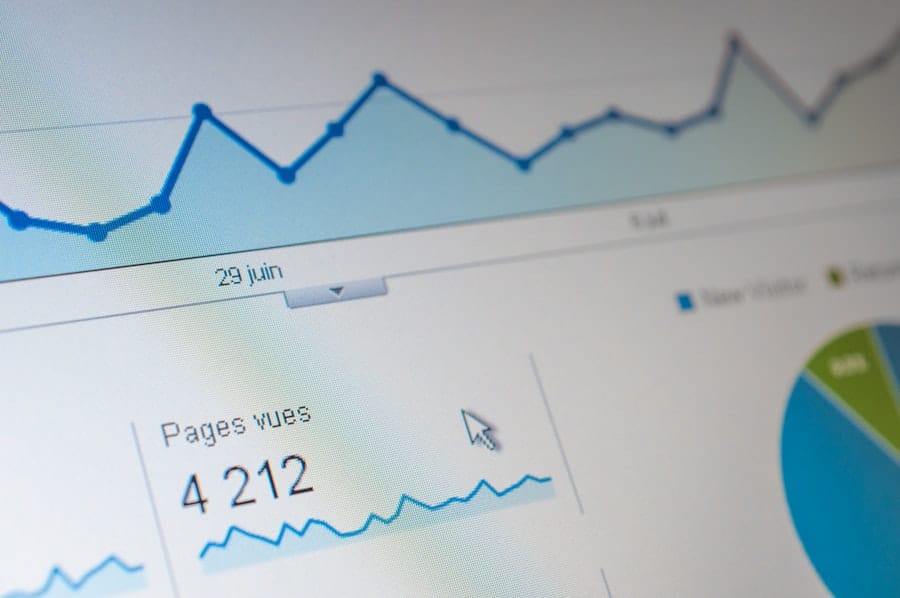The integration of technology into education has transformed traditional teaching methodologies, leading to the emergence of a variety of educational technology (EdTech) tools designed to enhance learning experiences. Among these tools, those focused on monitoring and analyzing student behavior have gained significant traction. These tools provide educators with the ability to gather real-time data on student interactions, engagement levels, and behavioral patterns, which can be pivotal in creating tailored educational experiences.
By leveraging these technologies, educators can not only identify students who may be struggling but also foster a more inclusive and supportive learning environment. The importance of monitoring student behavior cannot be overstated. Understanding how students interact with their peers, respond to instructional strategies, and engage with content is crucial for effective teaching.
EdTech tools facilitate this understanding by offering insights that were previously difficult to obtain. For instance, platforms that track student participation in discussions or analyze the time spent on various tasks can reveal trends that inform instructional adjustments. As educators increasingly rely on data-driven decision-making, the role of EdTech tools in monitoring and analyzing student behavior becomes essential in promoting academic success and emotional well-being.
Key Takeaways
- EdTech tools play a crucial role in monitoring and analyzing student behavior, providing valuable insights for educators and administrators.
- Data is essential for understanding student behavior, and EdTech tools offer a wealth of information that can be used to make informed decisions.
- EdTech tools can be used to track student engagement, allowing educators to identify patterns and intervene when necessary to improve student participation.
- Analyzing student performance with EdTech tools enables educators to identify strengths and weaknesses, personalize learning experiences, and provide targeted support.
- EdTech tools can also be utilized for behavior management, offering features such as behavior tracking, intervention strategies, and communication with parents to support student success.
The Role of Data in Understanding Student Behavior
Uncovering the Complexity of Student Behavior
Data plays a crucial role in understanding the intricacies of student behavior. By collecting both quantitative and qualitative data, educators can gain a deeper understanding of how students learn and interact within the classroom environment. This data can encompass metrics such as attendance records, participation rates, assignment completion rates, and even social interactions captured through digital platforms.
Identifying Patterns and Underlying Issues
The aggregation of this information enables educators to identify patterns that may indicate underlying issues affecting student performance or engagement. For instance, a teacher might notice through data analysis that a particular group of students consistently underperforms in collaborative projects. By delving deeper into the data, they may discover that these students are less likely to participate in discussions or contribute to group work.
Targeted Interventions and Personalized Teaching
This insight can prompt targeted interventions, such as restructuring group dynamics or providing additional support for those students. Furthermore, data-driven insights can help educators tailor their teaching strategies to better meet the diverse needs of their students, ultimately fostering a more effective learning environment.
Using EdTech Tools to Track Student Engagement

Tracking student engagement is a critical aspect of understanding how well students are absorbing information and participating in their learning journey. EdTech tools designed for this purpose often utilize various metrics to gauge engagement levels, such as time spent on tasks, frequency of interactions with course materials, and participation in discussions or activities. For instance, learning management systems (LMS) like Canvas or Moodle provide analytics dashboards that allow educators to monitor student activity within the platform, offering insights into which resources are most frequently accessed and how long students spend on each task.
Moreover, tools like Kahoot! or Quizizz can be employed to create interactive quizzes that not only assess knowledge but also engage students in a fun and competitive manner. These platforms provide immediate feedback on student performance and engagement levels, allowing educators to adjust their teaching strategies in real-time.
By analyzing engagement data from these tools, teachers can identify which students may need additional encouragement or support, ensuring that no learner is left behind.
Analyzing Student Performance with EdTech Tools
The analysis of student performance is another critical function of EdTech tools. These platforms often incorporate assessment features that allow educators to evaluate student understanding through various means, including quizzes, tests, and project submissions. Advanced analytics capabilities enable teachers to break down performance data by individual students or groups, providing a comprehensive view of academic achievement across different subjects or skills.
For example, platforms like Google Classroom offer built-in grading systems that allow teachers to track student performance over time. Educators can analyze trends in grades, identify areas where students excel or struggle, and adjust their instructional approaches accordingly. Additionally, some EdTech tools utilize artificial intelligence algorithms to predict future performance based on historical data, enabling proactive interventions for at-risk students.
This level of analysis not only enhances the educator’s ability to support individual learners but also contributes to overall curriculum development by highlighting areas that may require additional focus or resources.
Utilizing EdTech Tools for Behavior Management
Behavior management is an essential component of creating a conducive learning environment. EdTech tools designed for this purpose can help educators monitor student behavior in real-time and implement strategies to address behavioral issues effectively. For instance, classroom management software like ClassDojo allows teachers to track student behavior by awarding points for positive actions and addressing negative behaviors promptly.
This immediate feedback loop encourages students to reflect on their actions and fosters a sense of accountability. Furthermore, some EdTech platforms offer features that enable teachers to communicate directly with parents regarding their child’s behavior and progress. This home-school connection is vital for reinforcing positive behaviors outside the classroom and ensuring that parents are engaged in their child’s educational journey.
By utilizing these tools for behavior management, educators can create a more structured environment that promotes positive interactions among students while minimizing disruptions.
The Impact of EdTech Tools on Student Behavior and Learning Outcomes

Enhancing Student Engagement
For instance, gamified learning experiences provided by platforms like Classcraft can transform mundane lessons into exciting challenges that captivate students’ attention and encourage active participation.
Personalized Learning Experiences
Moreover, the data collected through these tools can lead to more personalized learning experiences. When educators understand individual student behaviors and preferences through analytics, they can tailor instruction to meet diverse learning needs.
Academic Performance and Sense of Belonging
This personalized approach not only enhances academic performance but also fosters a sense of belonging among students, as they feel seen and supported in their unique learning journeys.
Challenges and Considerations in Implementing EdTech Tools for Behavior Monitoring
Despite the numerous benefits associated with EdTech tools for monitoring student behavior, several challenges must be addressed during implementation. One significant concern is data privacy and security. As schools increasingly collect sensitive information about students’ behaviors and academic performance, it is crucial to ensure that this data is protected from unauthorized access or misuse.
Educators must be well-versed in data protection regulations such as FERPA (Family Educational Rights and Privacy Act) to safeguard student information. Additionally, the successful implementation of EdTech tools requires adequate training for educators. Many teachers may feel overwhelmed by the rapid pace of technological advancements or lack the necessary skills to effectively utilize these tools in their classrooms.
Best Practices for Using EdTech Tools to Monitor and Analyze Student Behavior
To maximize the effectiveness of EdTech tools for monitoring and analyzing student behavior, several best practices should be considered. First and foremost, it is essential to establish clear objectives for using these tools within the educational context. Educators should define what specific behaviors or outcomes they aim to monitor and analyze, ensuring that the chosen tools align with these goals.
Students should be informed about how their data will be used and the benefits it brings to their learning experience. This transparency builds trust between educators and students while encouraging self-reflection among learners regarding their behaviors.
Regularly reviewing and adjusting the use of EdTech tools based on feedback from both students and educators is another best practice. Continuous improvement ensures that the tools remain relevant and effective in meeting the evolving needs of the classroom environment. By embracing these best practices, educators can harness the full potential of EdTech tools to create a more engaging and supportive learning atmosphere that promotes positive student behavior and academic success.
If you are interested in exploring the best software for working with piles of numbers, you should check out this article. Just like EdTech tools help monitor and analyze student behavior, having the right software can make a significant difference in efficiently managing and analyzing large amounts of numerical data. Whether you are a data analyst, researcher, or simply someone who deals with numbers on a regular basis, this article can provide valuable insights into the best tools available to streamline your work processes.
FAQs
What are EdTech tools?
EdTech tools are educational technology tools that are designed to enhance the teaching and learning experience. These tools can include software, apps, and platforms that are used to facilitate learning, assess student progress, and provide personalized instruction.
How do EdTech tools help monitor student behavior?
EdTech tools can help monitor student behavior by tracking student engagement, participation, and performance in real-time. These tools can provide insights into how students are interacting with the material, how they are progressing, and where they may be struggling.
How do EdTech tools help analyze student behavior?
EdTech tools can help analyze student behavior by collecting and analyzing data on student performance, learning patterns, and interactions with the material. This data can be used to identify trends, patterns, and areas for improvement, and to provide personalized feedback and support to students.
What are the benefits of using EdTech tools to monitor and analyze student behavior?
Using EdTech tools to monitor and analyze student behavior can provide educators with valuable insights into student learning and engagement. This can help educators identify areas for improvement, provide targeted support to students, and make data-driven decisions to enhance the learning experience.

